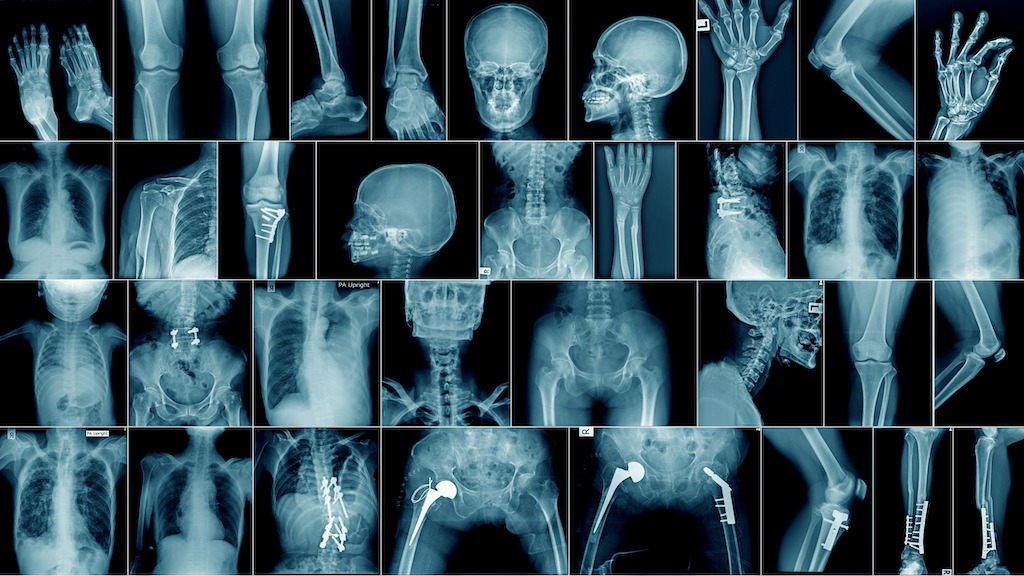Well we made it to Pet Friday! And this one reminded me of an 80's song by Devo. However, this is about the dog breed the Whippet. It is a strange name for a dog, so lets together discover the breed the Whippet. The following was obtained from justfunfacts.com:
"The Whippet is a dog breed of medium size.
It is quite similar to the greyhound, though smaller in size.
Typically, it can run as fast as 55 kilometers (35 miles) per hour, making it the fastest dog breed of its size.
The name “Whippet” is derived from an early-17th-century word, now obsolete, meaning “to move briskly”.
This sighthound is also known for its alert, friendly, and playful demeanor.
The joyful whippet is a lovely and loyal companion that makes a delightful addition to almost any household.
This breed generally does well for apartment living, since it is not known to be much of a barker, it is fairly inactive indoors, and just needs a good walk or run.
Whippets also participate in dog sports such as lure coursing, agility, dock diving and flyball.
The average lifespan of the Whippet is 11 to 14 years.
The Whippet standing from 46 to 56 cm (18 to 22 inches) and weighing about 13 kg (28 pounds).
Because colour is considered immaterial in judging Whippets, they come in a wide variety of colours and marking patterns, everything from solid black to solid white, with red, fawn, brindle, blue, or cream.
These dogs were bred to hunt by sight, coursing game in open areas at high speeds.
There are numerous representations of small greyhound-like hounds in art dating back to Ancient Egyptian times.
In medieval England, a small Greyhound breed became popular for use as a ratting dog, the first written English use of the word Whippet with regard to a type of dog was in 1610.
Edward of Norwich, 2nd Duke of York confirmed in his early-15th-century translation and additions to the original late 14th century French Livre de chasse the advantage of maintaining the great, the middle, and the small size of greyhound for different sorts of game.
The English physician and academic John Caius refers in his 16th century De Canibus Britannicus to lesser as well as greater sorts of Leporarius, Grehounde (greyhound) and notably to a type which has been connected to the Whippet, the Tumbler, a lesser sort of mungrell Greyhounde and excellent warren dog for catching rabbits, also recorded by the early-19th-century Scottish curator and editor Thomas Brown.
Whippets were commonly known as “snap dogs” for their tendency to “snap up” nearby prey. In the picture by Jean-Baptiste Oudry (1686–1755) of two dogs presented to Louis XV, they are either Whippets or small Greyhounds, but are probably related to an early form of Whippet.
Oudry also painted a second painting of Misse with a different, non-sighthound dog. There is a 1758 painting by Pompeo Batoni entitled Portrait of Charles Compton, 7th Earl of Northampton which features a similar whippet-like dog.
In its formative days, the Whippet breed had such colorful nicknames as the “Poor Man’s Racehorse” and the “Lightning Rag Dog” (they would chase a rag dragged along a straight course in an early version of lure coursing).
When it came to race day itself, the handlers waited at the start line for the boom of a pistol, the signal for releasing their dogs, though “release” is far too gentle a word: Holding the dog’s collar in one hand, lifting him by the base of the tail with the other, the handler would literally toss his dog forward, intent on giving him even the tiniest edge of position or stride to cross the finish line first. After all, bragging rights weren’t the only thing to be walked away with at these noisy gatherings, held on Saturday afternoons or Sunday mornings: Substantial cash prizes – sometimes as much as a week’s wages – were also at stake.
The whippet was first brought to the US in the late 1800s and registered with the American Kennel Club (AKC) in 1888. Surprisingly, the breed was not officially recognized by the English Kennel Club until 1891.
In the 19th century, there were two varieties of Whippet. The first type had a smooth coat, was more popular in Lancashire, Yorkshire, and the Midlands, and became the modern Whippet. The other had a rough coat from crossbreeding with Bedlington Terriers. This type was more popular in Durham and Northumberland and was frequently referred to as a “rabbit dog”. Early specimens were taken from the race track by the dog fanciers of the time and exported around the world. John Taylor said that “In all the shapes and forms of dogges – of all which there are but two sorts that are useful to man’s profits, which two are the mastiffe and the little curre, whippet, or house-dogge – all the rest are for pleasure and recreation.”
The breed does love to run, so be sure to provide plenty of space and daily exercise. As a sighthound, the whippet is likely to run after anything in motion, and will not easily find its way back. The breed should never be permitted to run off-leash, and the “invisible fence” is not an option as they will not stop once they spot something to chase. A fence that is at least 1.5 meters (5 feet) tall should keep them in the yard.
Today, the Whippet is the 55th most popular breed according to the American Kennel Club.
Usually, the average price of an Whippet puppy from a reputable breeder is between $2,000 and $2,500, while a top-quality English Whippet puppy can cost as high as $3,500."
Reference: http://justfunfacts.com/interesting-facts-about-whippets/
I have lost a lot of faith with the Medical Community and the Governments over the last several years, but there are a few good things that can raise above the corruption and the pushing of drugs a new approach to heal people. The following is from www.gaia.com and written by Hunter Parsons that does not involve any drug or pushing an ineffective so called vaccine that the drug company is not held accountable in any way but they use sound! The use of sound can regrow bone tissue! Here is the story:
"The future of regenerative medicine could be found within sound healing by regrowing bone cells with sound waves.
The use of sound as a healing modality has an ancient tradition all over the world. The ancient Greeks used sound to cure mental disorders; Australian Aborigines reportedly use the didgeridoo to heal; and Tibetan or Himalayan singing bowls were, and still are, used for spiritual healing ceremonies.
Recently, a study showed an hour-long sound bowl meditation reduced anger, fatigue, anxiety, and ...
Not a fan of a Defense Agency studying Anti-Gravity and other Exotic Tech, but if the commercial world and make this technology cheap that will change our world yet again. The following is about three minute read and from www.gaia.com. The below was written by Hunter Parsons:
"Wormholes, invisibility cloaks, and anti-gravity — it’s not science fiction, it’s just some of the exotic things the U.S. government has been researching.
A massive document dump by the Defense Intelligence Agency shows some of the wild research projects the United States government was, at least, funding through the Advanced Aerospace Threat Identification Program known as AATIP.
And another lesser-known entity called the Advanced Aerospace Weapons System Application Program or AAWSAP
The Defense Intelligence Agency has recently released a large number of documents to different news outlets and individuals who have filed Freedom of Information Act requests.
Of particular interest are some 1,600 pages released to Vice News, which ...
As our technology gets better we are discovering more about the history of mankind and pushing the timeline back further and further. The following article is from www.gaia.com and written by Michael Chary that discusses this new find that changes the historical timeline:
"Over the past decade, there have been a number of archeological revelations pushing back the timeline of human evolution and our ancient ancestors’ various diasporas. Initially, these discoveries elicit some resistance as archeologists bemoan the daunting prospect of rewriting the history books, though once enough evidence is presented to established institutions, a new chronology becomes accepted.
But this really only pertains to the era of human development that predates civilization — the epochs of our past in which we were merely hunter-gatherers and nomads roaming the savannahs. Try challenging the consensus timeline of human civilization and it’s likely you’ll be met with derision and rigidity.
Conversely, someone of an alternative...
Not sure if you have heard of a show on YouTube called "The Why Files". If not you should check it out it is interesting and has some humor with it on different subjects. Last weeks was on a different theory how the Universe works and how main stream Science is attempting to shut it down like is always seems to do if it goes aguest some special interest. Today it is akin to what happened to those who questioned the Earth was the Center of the Universe that main stream so called Science all believed during the Renaissance period, They called any theory that the Earth was not the Center of the Universe misinformation. Does this sound familiar today? People laughed and mocked people like Leonardo da Vinci, Nicolaus Copernicus, Georg Purbach as crack-pots, conspiracy theorists, nut-jobs and they were suppressed and even imprisoned for their radical thoughts and observations. Again it sounds like today in so many ways. In any event this is a good one to ponder and see even if a bad idea ...
Seemingly chaotic systems like the weather and the financial markets are governed by the laws of chaos theory.
We all have heard about chaos theory, but if you have not or have forgotten what chaos theory is well here you go from interestingengineering.com:
"Chaos theory deals with dynamic systems, which are highly sensitive to initial conditions, making it almost impossible to track the resulting unpredictable behavior. Chaos theory seeks to find patterns in systems that appear random, such as weather, fluid turbulence, and the stock market.
Since the smallest of changes can lead to vastly different outcomes, the long-term behavior of chaotic systems is difficult to predict despite their inherently deterministic nature.
As Edward Lorenz, who first proposed what became commonly known as the Butterfly Effect, eloquently said, "Chaos: When the present determines the future, but the approximate present does not approximately determine the future.""
You may have heard the term about chaos theory as a butterfly flaps its wings in Brazil,...
I for one have lost trust in Medical Doctors due to COVID and reflection that they seem to push pills for everything and untested so called vaccines that is using a unproven technology because the Government and the Medical Boards of the State told them to. There are a very few exceptions. Thus they do not address the key problem just prescribe more and more pills to keep you alive an sick longer for them and Big Phama to profit from you. Will AI do any better? Well that depends on what was used for the training of AI. If it also pushes pills and vaccines without question then you have the same problems noted above. However, if the AI Training includes all possible forms of treatment and they zero in on the right issues for the true problem then there is possibilities they would be way better than most of the current Medical Doctors today.
The following is from an article from interestingengineering.com and written by Paul Ratner:
"A new study looks at how accurately AI can diagnose patients. We interview the researcher, who weighs in on AI's role ...






























